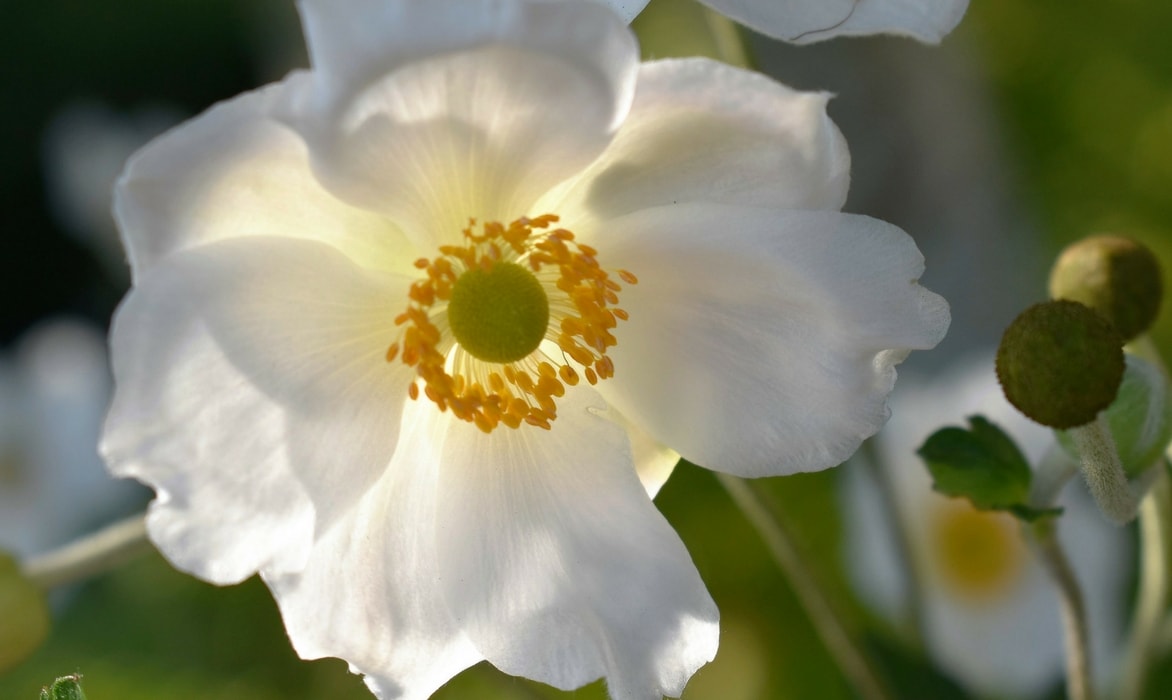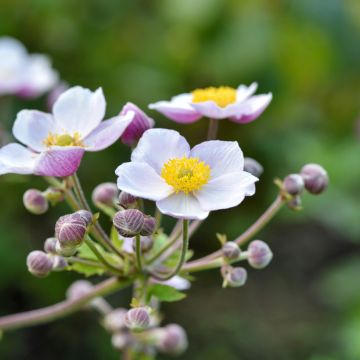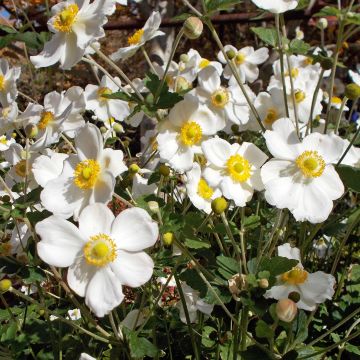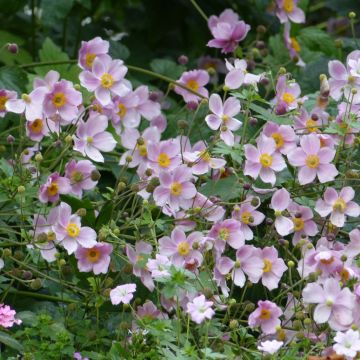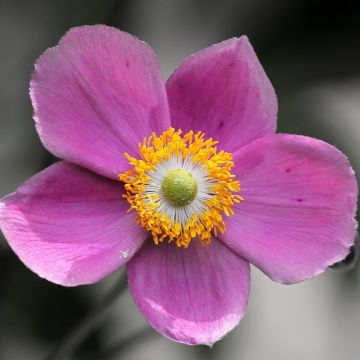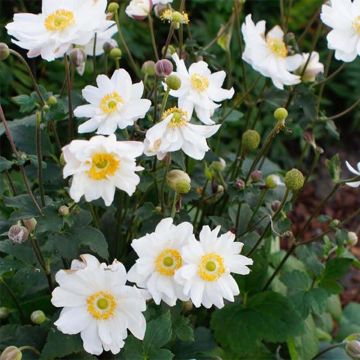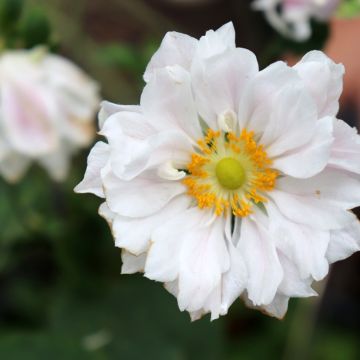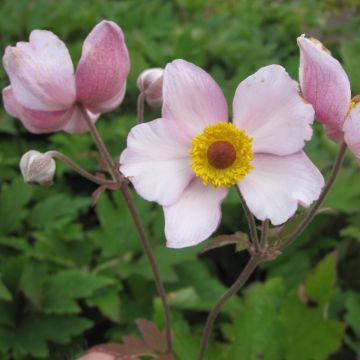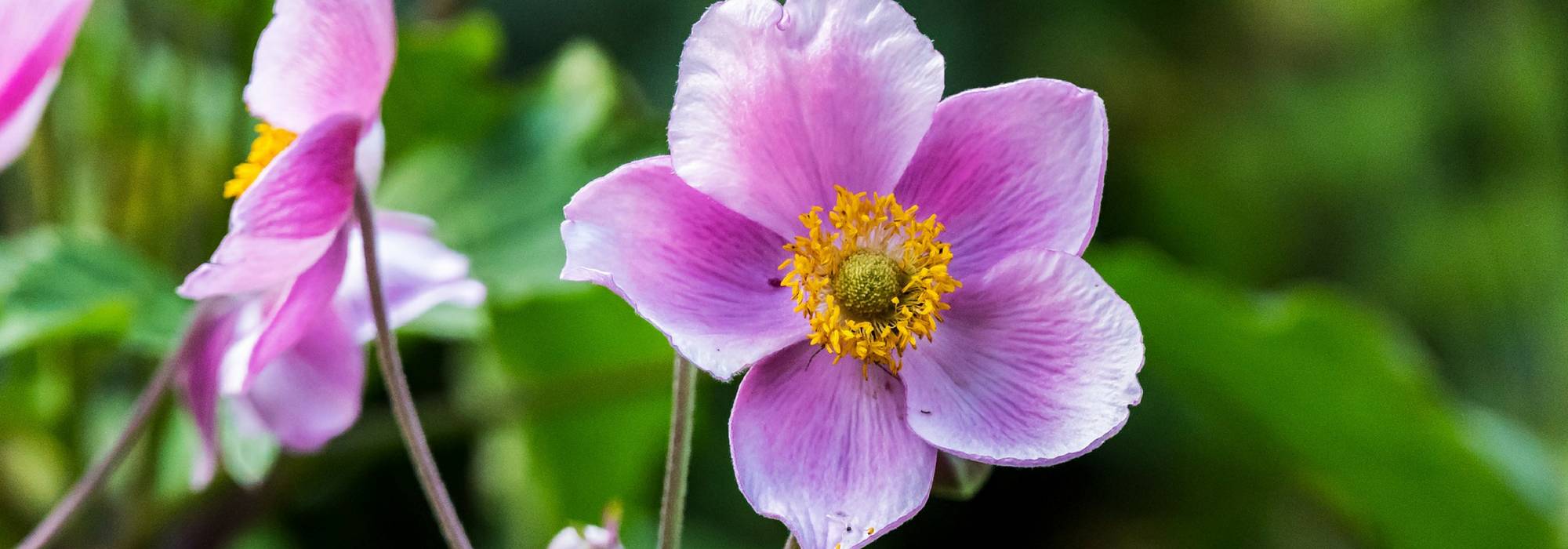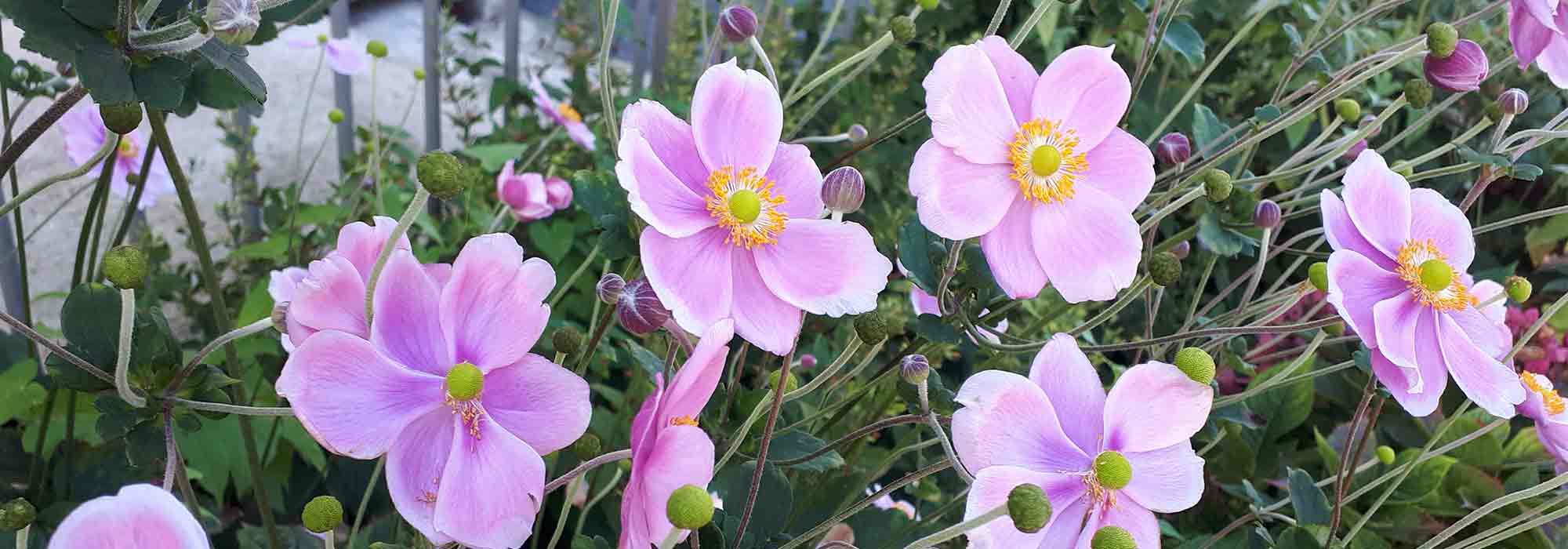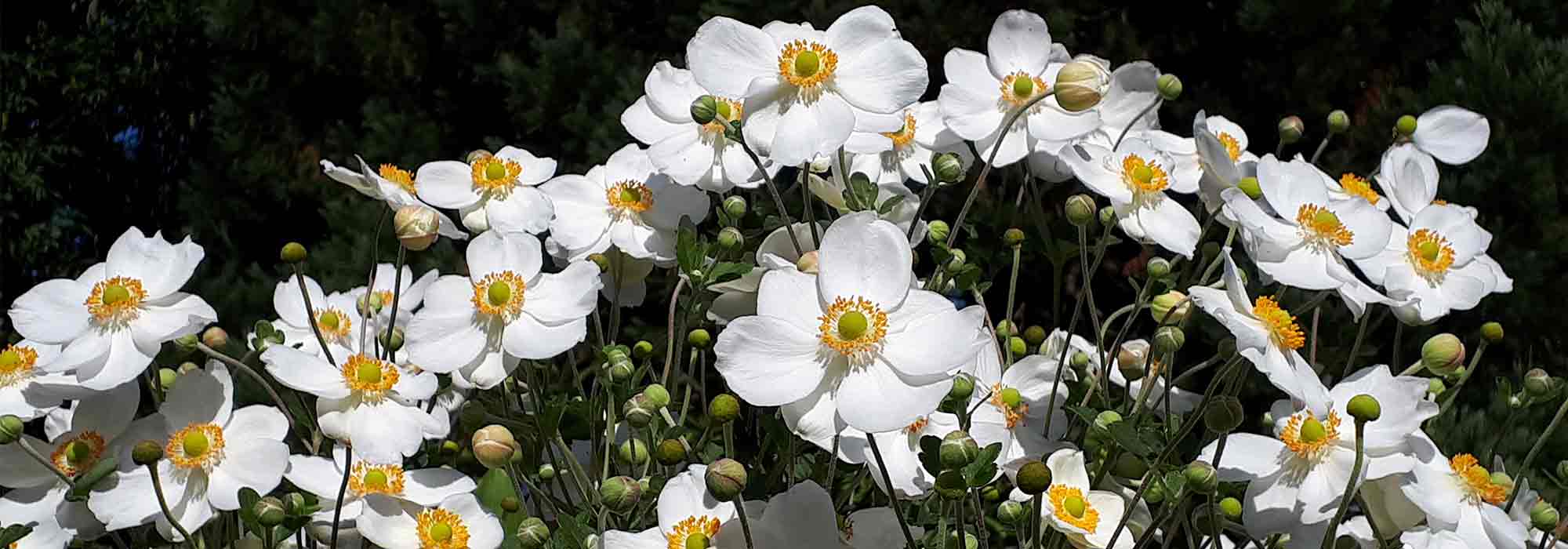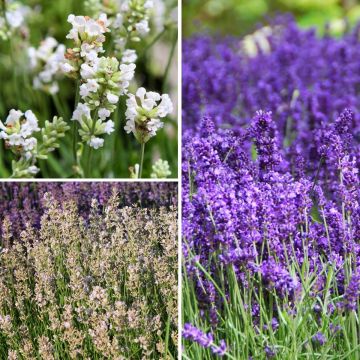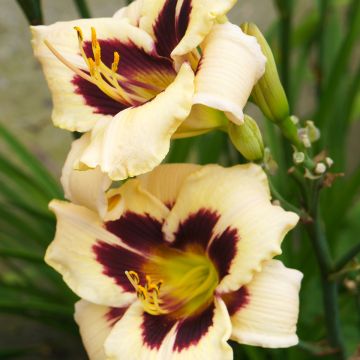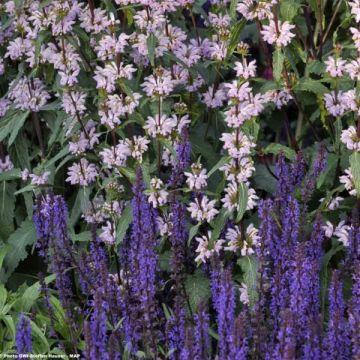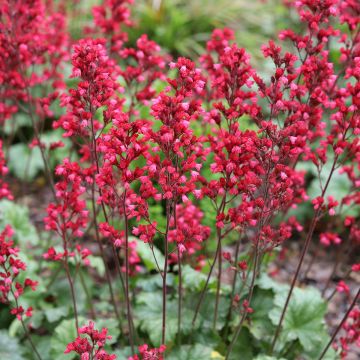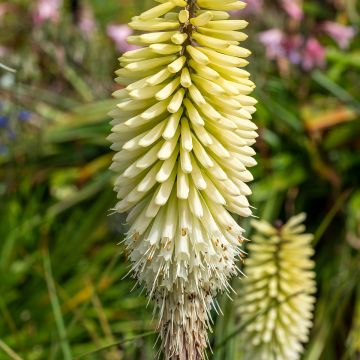

Anemone hupehensis var. japonica Prinz Heinrich
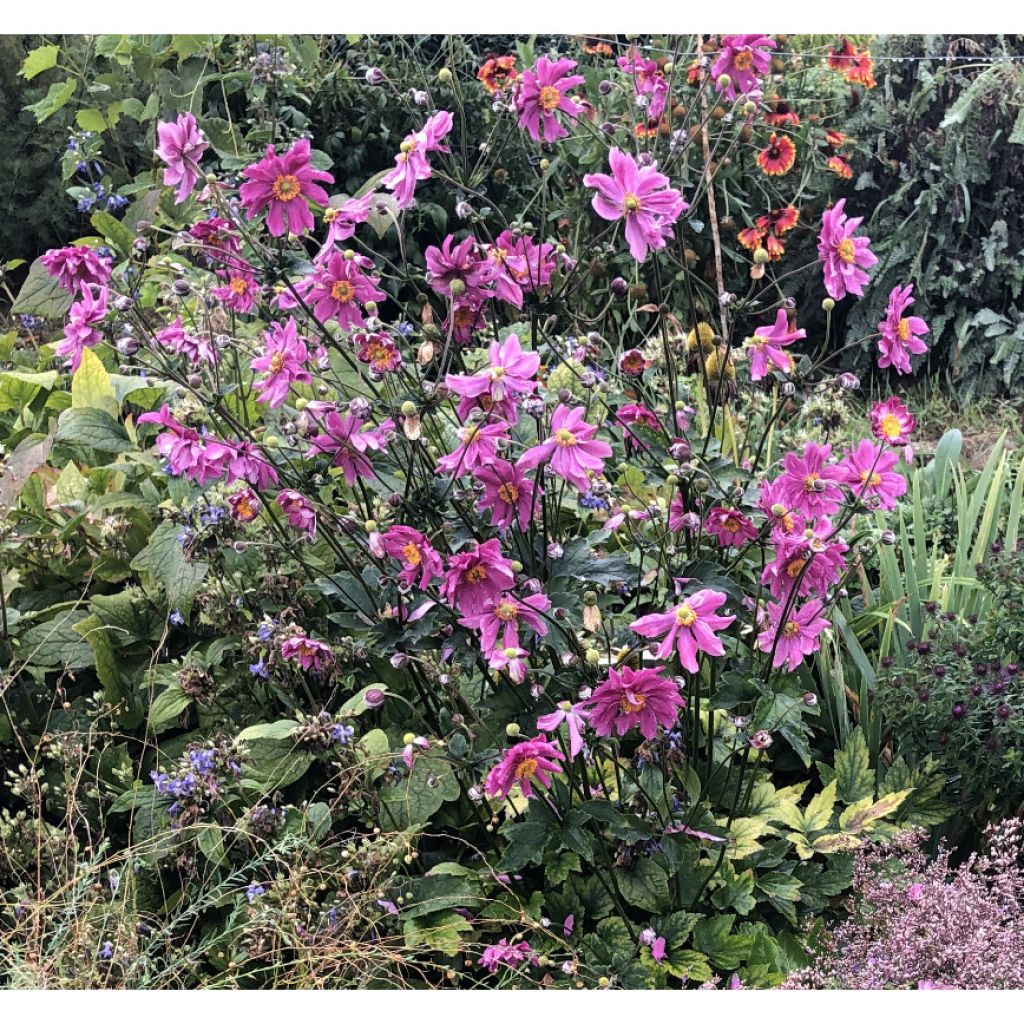

Anemone hupehensis var. japonica Prinz Heinrich
Anemone hupehensis var. japonica Prinz Heinrich
Anemone hupehensis var. japonica Prinz Heinrich
Japanese anemone, Thimbleweed, Windflower
The 3 young plants I purchased have finally taken root, with beautiful flowering already in this first year. However, there are three quite different color shades, all pretty and pleasing to me, but I wasn't expecting that.
Komoku, 21/09/2025
Special offer!
Receive a €20 voucher for any order over €90 (excluding delivery costs, credit notes, and plastic-free options)!
1- Add your favorite plants to your cart.
2- Once you have reached €90, confirm your order (you can even choose the delivery date!).
3- As soon as your order is shipped, you will receive an email containing your voucher code, valid for 3 months (90 days).
Your voucher is unique and can only be used once, for any order with a minimum value of €20, excluding delivery costs.
Can be combined with other current offers, non-divisible and non-refundable.
Home or relay delivery (depending on size and destination)
Schedule delivery date,
and select date in basket
This plant carries a 12 months recovery warranty
More information
We guarantee the quality of our plants for a full growing cycle, and will replace at our expense any plant that fails to recover under normal climatic and planting conditions.
Would this plant suit my garden?
Set up your Plantfit profile →
Description
Anemone hupehensis var. japonica 'Prinz Heinrich' offers abundant semi-double to double flowers which are dark pink to purple. The narrow petals are sometimes upright. This elegant perennial plant is a small variety with a long summer and autumn flowering period, producing magnificent flowers on sturdy stems, with open corollas surrounding a wide golden yellow stamen centre. It possesses an indefinable charm and a simple beauty that complements the exuberant flowers of asters so well. It thrives in full sun or partial shade, in moist and rich soil.
The 'Prinz Heinrich' Japanese anemone is a perennial plant belonging to the family Ranunculaceae, and it is an old variety obtained in 1902. It will reach a height of 60 to 80 cm depending on the richness of the soil in which it grows, with a diameter of 60 cm (24in). Like other Japanese anemones, it is a perennial plant with fibrous 'tubers' that form large, vigorous, and rounded clumps. The foliage is deciduous to semi-evergreen depending on the climate, dissected, dark green, strongly veined on the underside, and hairy. The flowering period takes place from August to October, and it is particularly abundant. The flowers are solitary, borne on sturdy and straight stems. They first appear as delightful oval and fluffy buds, purplish in colour, and then open into wide cups with 20 to 30 narrow dark pink to reddish purple petals, which are sometimes upright and measure about 4 cm (2in) in diameter. They surround a wide golden yellow centre densely filled with stamens. Japanese anemones can live for about ten years in the same spot.
The Japanese anemone is one of the loveliest autumn flowers. Light and graceful, it sways gently in the wind, indifferent to the first frost. It decorates the garden or large pots on the terrace from late summer until the first frost. Placed at the back of a border for the taller varieties, it combines its elegant flowering with the grace of Aster cordifolius or Aster laevis, and the nostalgic charm of perennial chrysanthemums. The 'Prinz Heinrich' variety is perfect in the centre or at the front of borders, in front of a hedge of hydrangeas, for example. The finely dissected foliage of anemones adds a beautiful dark green touch to flower bouquets. It can become invasive if it likes its growing conditions, but it self-seeds easily. It is quite easy to control its growth.
Anemone hupehensis var. japonica Prinz Heinrich in pictures
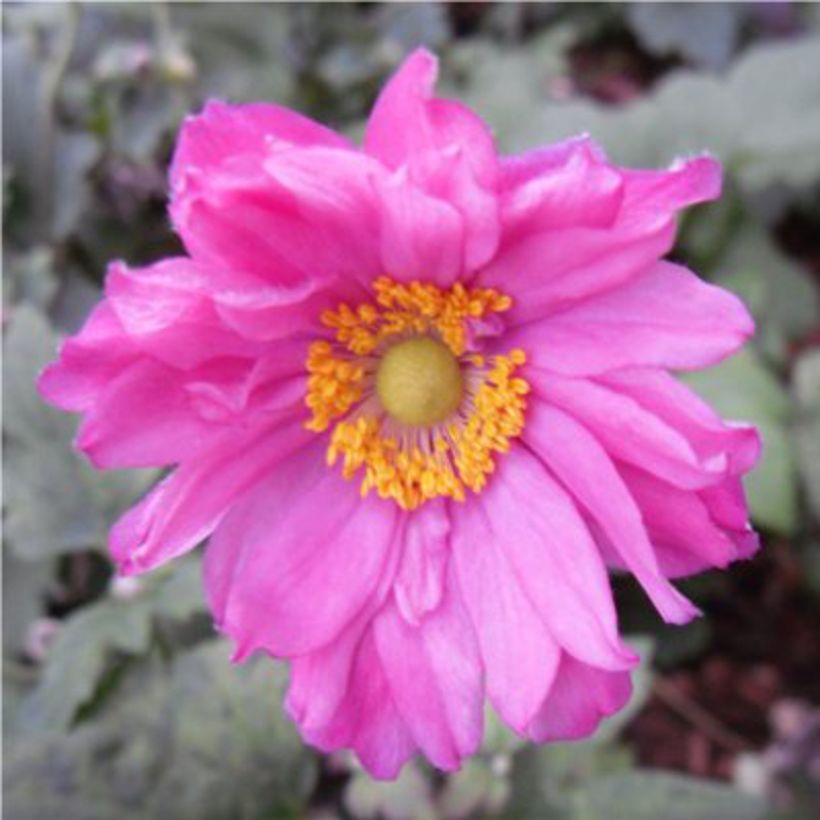

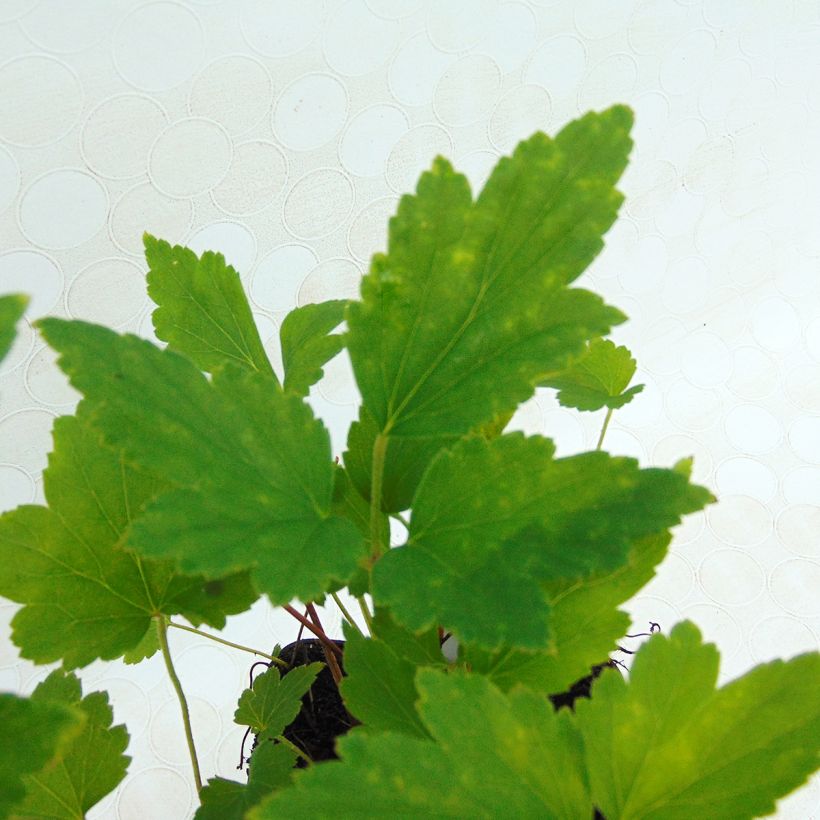

Flowering
Foliage
Plant habit
Botanical data
Anemone
hupehensis var. japonica
Prinz Heinrich
Ranunculaceae
Japanese anemone, Thimbleweed, Windflower
Cultivar or hybrid
Other Japanese Anemones
View all →Planting and care
Japanese anemones grow in partial shade, in a moist, humus-rich, well-drained soil with a loose texture and without too much limestone, where they slowly spread with the help of their underground rootstocks. Plant it in a sheltered spot, away from strong winds, in spring or autumn, spacing them 30 cm (12in) apart. Once the young plants are established, they should not be disturbed. The flowering becomes increasingly abundant as the years go by. In late autumn, cut the flower stems to ground level. Every 2 or 3 years, apply well-rotted compost at the base to enrich the soil, as they are quite demanding.
Planting period
Intended location
Care
Planting & care advice
-
, onOrder confirmed
Reply from on Promesse de fleurs
Similar products
Haven't found what you were looking for?
Hardiness is the lowest winter temperature a plant can endure without suffering serious damage or even dying. However, hardiness is affected by location (a sheltered area, such as a patio), protection (winter cover) and soil type (hardiness is improved by well-drained soil).

Photo Sharing Terms & Conditions
In order to encourage gardeners to interact and share their experiences, Promesse de fleurs offers various media enabling content to be uploaded onto its Site - in particular via the ‘Photo sharing’ module.
The User agrees to refrain from:
- Posting any content that is illegal, prejudicial, insulting, racist, inciteful to hatred, revisionist, contrary to public decency, that infringes on privacy or on the privacy rights of third parties, in particular the publicity rights of persons and goods, intellectual property rights, or the right to privacy.
- Submitting content on behalf of a third party;
- Impersonate the identity of a third party and/or publish any personal information about a third party;
In general, the User undertakes to refrain from any unethical behaviour.
All Content (in particular text, comments, files, images, photos, videos, creative works, etc.), which may be subject to property or intellectual property rights, image or other private rights, shall remain the property of the User, subject to the limited rights granted by the terms of the licence granted by Promesse de fleurs as stated below. Users are at liberty to publish or not to publish such Content on the Site, notably via the ‘Photo Sharing’ facility, and accept that this Content shall be made public and freely accessible, notably on the Internet.
Users further acknowledge, undertake to have ,and guarantee that they hold all necessary rights and permissions to publish such material on the Site, in particular with regard to the legislation in force pertaining to any privacy, property, intellectual property, image, or contractual rights, or rights of any other nature. By publishing such Content on the Site, Users acknowledge accepting full liability as publishers of the Content within the meaning of the law, and grant Promesse de fleurs, free of charge, an inclusive, worldwide licence for the said Content for the entire duration of its publication, including all reproduction, representation, up/downloading, displaying, performing, transmission, and storage rights.
Users also grant permission for their name to be linked to the Content and accept that this link may not always be made available.
By engaging in posting material, Users consent to their Content becoming automatically accessible on the Internet, in particular on other sites and/or blogs and/or web pages of the Promesse de fleurs site, including in particular social pages and the Promesse de fleurs catalogue.
Users may secure the removal of entrusted content free of charge by issuing a simple request via our contact form.
The flowering period indicated on our website applies to countries and regions located in USDA zone 8 (France, the United Kingdom, Ireland, the Netherlands, etc.)
It will vary according to where you live:
- In zones 9 to 10 (Italy, Spain, Greece, etc.), flowering will occur about 2 to 4 weeks earlier.
- In zones 6 to 7 (Germany, Poland, Slovenia, and lower mountainous regions), flowering will be delayed by 2 to 3 weeks.
- In zone 5 (Central Europe, Scandinavia), blooming will be delayed by 3 to 5 weeks.
In temperate climates, pruning of spring-flowering shrubs (forsythia, spireas, etc.) should be done just after flowering.
Pruning of summer-flowering shrubs (Indian Lilac, Perovskia, etc.) can be done in winter or spring.
In cold regions as well as with frost-sensitive plants, avoid pruning too early when severe frosts may still occur.
The planting period indicated on our website applies to countries and regions located in USDA zone 8 (France, United Kingdom, Ireland, Netherlands).
It will vary according to where you live:
- In Mediterranean zones (Marseille, Madrid, Milan, etc.), autumn and winter are the best planting periods.
- In continental zones (Strasbourg, Munich, Vienna, etc.), delay planting by 2 to 3 weeks in spring and bring it forward by 2 to 4 weeks in autumn.
- In mountainous regions (the Alps, Pyrenees, Carpathians, etc.), it is best to plant in late spring (May-June) or late summer (August-September).
The harvesting period indicated on our website applies to countries and regions in USDA zone 8 (France, England, Ireland, the Netherlands).
In colder areas (Scandinavia, Poland, Austria...) fruit and vegetable harvests are likely to be delayed by 3-4 weeks.
In warmer areas (Italy, Spain, Greece, etc.), harvesting will probably take place earlier, depending on weather conditions.
The sowing periods indicated on our website apply to countries and regions within USDA Zone 8 (France, UK, Ireland, Netherlands).
In colder areas (Scandinavia, Poland, Austria...), delay any outdoor sowing by 3-4 weeks, or sow under glass.
In warmer climes (Italy, Spain, Greece, etc.), bring outdoor sowing forward by a few weeks.






























